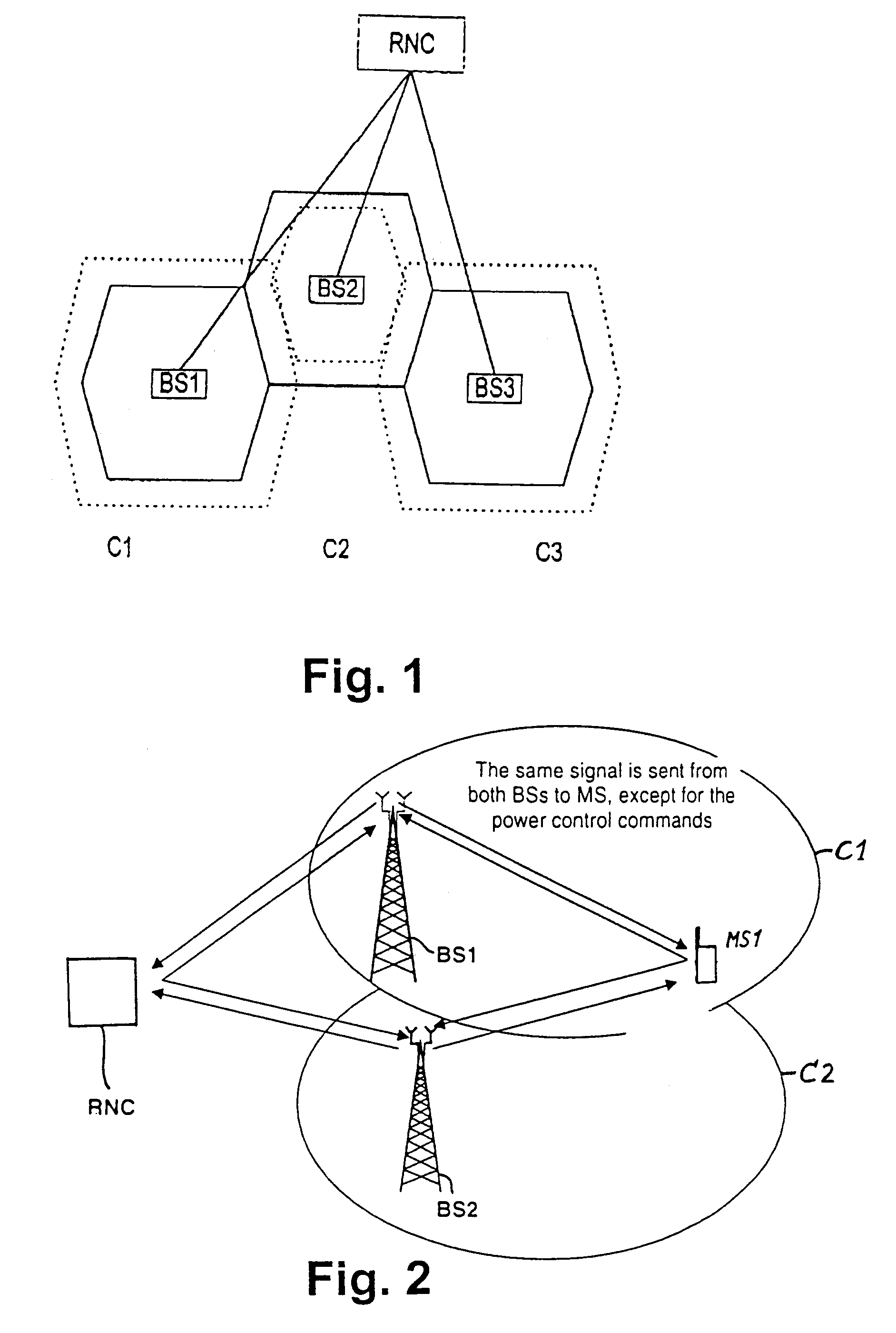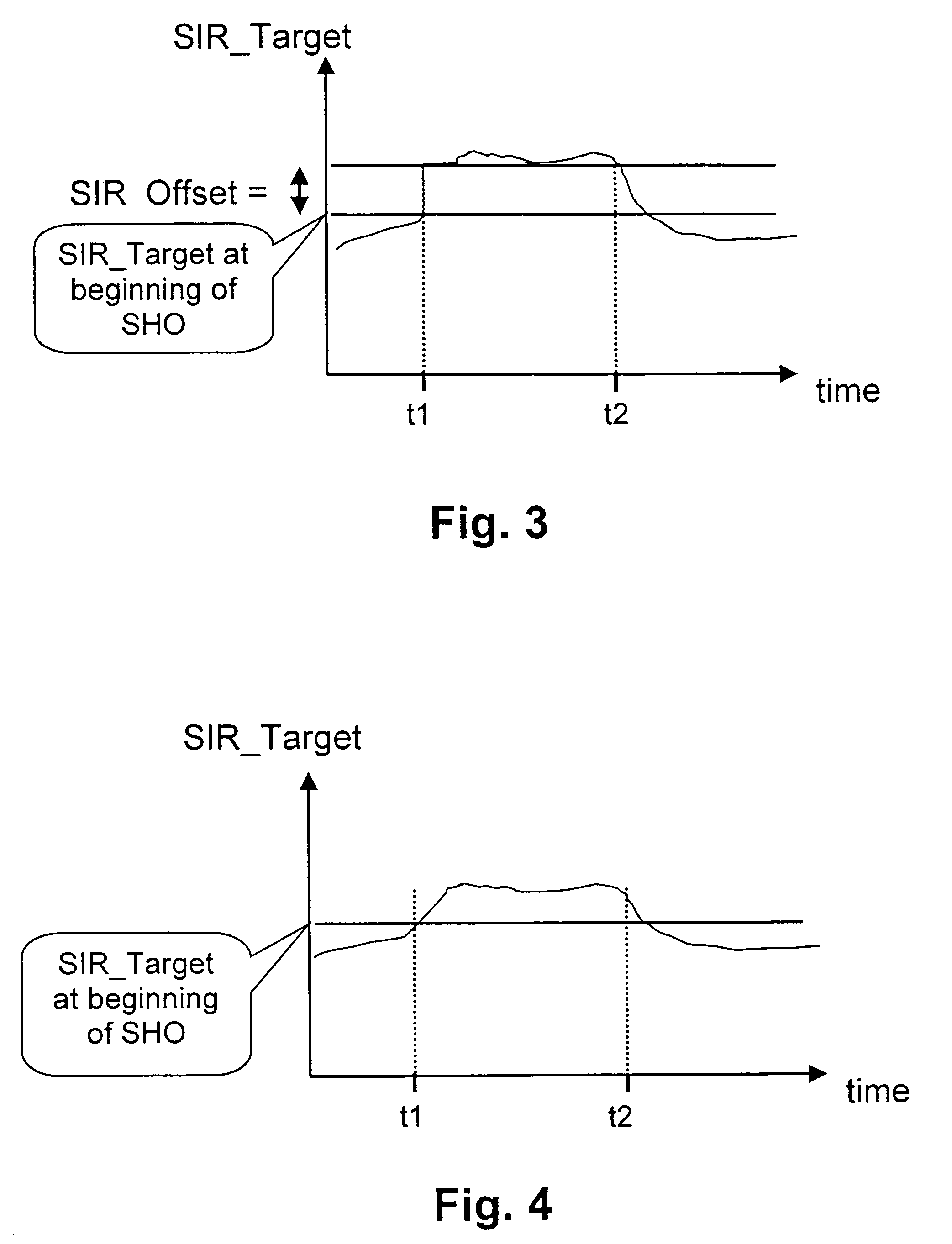Method and device for controlling the power in an asymmetric soft handover condition
a transmission power and asymmetric technology, applied in power management, radio transmission, electrical equipment, etc., can solve the problems of insufficient transmission power of mobile stations to reach the other base stations, inability to achieve or maintain uplink synchronisation, and inability to maintain soft handover
- Summary
- Abstract
- Description
- Claims
- Application Information
AI Technical Summary
Benefits of technology
Problems solved by technology
Method used
Image
Examples
Embodiment Construction
[0062]In the following, preferred embodiments of the invention are described in more detail with reference to the accompanying drawings.
[0063]According to the invention, a procedure is provided to automatically increase the transmission power of a mobile station in a wideband code division multiple access system, if the mobile station is in a soft handover situation, said mobile being located in an area of overlapping cells.
[0064]FIG. 1 illustrates the basic structure of a WDMA-system, in which base stations BS1, BS2, BS3 each define an associated cell C1, C2, C3. Transmission links are provided from the base stations BS1, BS2, BS3 to the Radio Network Controller RNC; data received in the base stations are routed to the RNC for combining, for processing these data and for controlling the soft handover routines.
[0065]By each base station BS1, BS2, BS3 a pilot signal is emitted which carries a bit sequence or a code known by the mobile stations. The bit sequence is base station depend...
PUM
 Login to View More
Login to View More Abstract
Description
Claims
Application Information
 Login to View More
Login to View More - R&D
- Intellectual Property
- Life Sciences
- Materials
- Tech Scout
- Unparalleled Data Quality
- Higher Quality Content
- 60% Fewer Hallucinations
Browse by: Latest US Patents, China's latest patents, Technical Efficacy Thesaurus, Application Domain, Technology Topic, Popular Technical Reports.
© 2025 PatSnap. All rights reserved.Legal|Privacy policy|Modern Slavery Act Transparency Statement|Sitemap|About US| Contact US: help@patsnap.com



